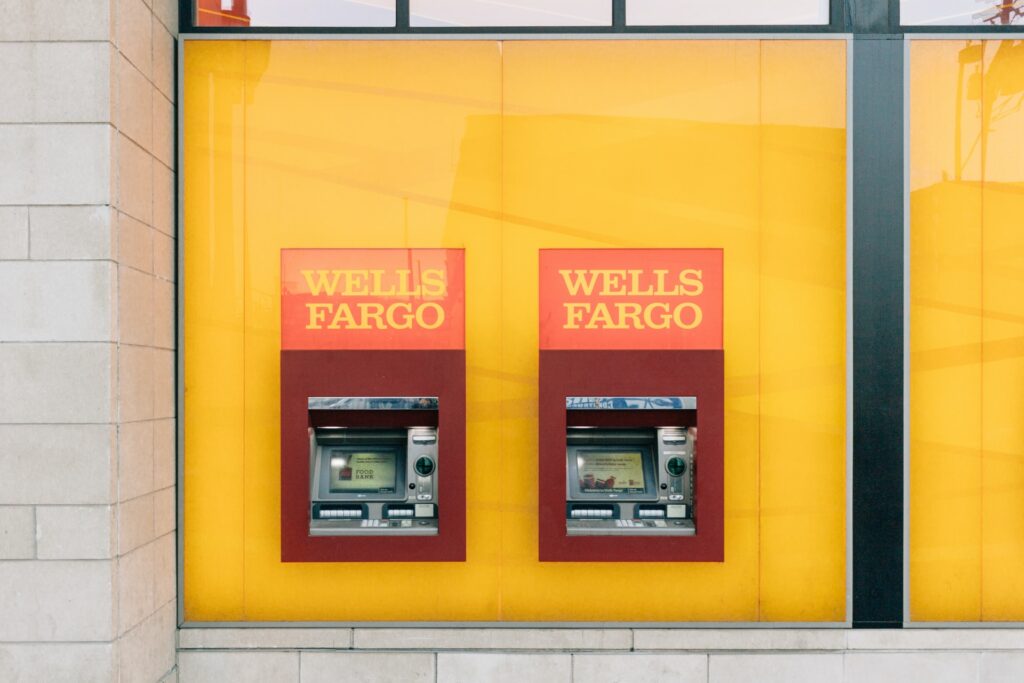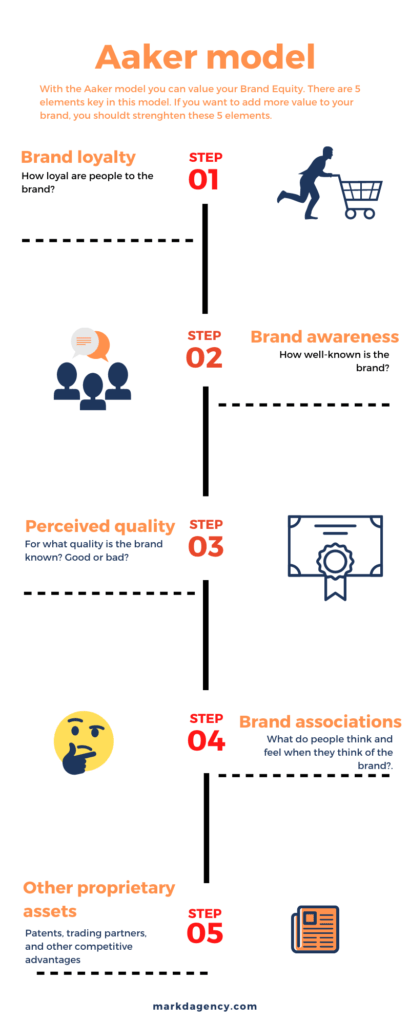Brand equity is one of the most valuable assets of branding. You need a strong and consistent marketing plan to build brand equity. However, it is also one of the most difficult forms of equity to measure. There are many factors involved which are both tangible and intangible.
Do you want to know what brand equity is? And how to value your own brand?
After reading this article you will know:
- What brand Equity is
- How to value your own brand equity
- Strategies to increase your brand equity
What is brand equity?
Brand equity is the value gain a business receives from its name recognition. Often this means that customers are willing to spend more money on your product because of the premium status your brand carries.
Often there is a correlation between your product and your competitor's product. When your product's brand equity is higher than your competitor's then your products will be seen as superior. For example, Mercedes is known for higher quality cars than Peugeot. Therefore people are willing to spend more money on a Mercedes than on a Peugeot.
Two types of brand equity
There are two types of brand equity: negative and positive brand equity.
So we've discussed the value gain a business receives from positive branding equity. Your products or services are worth more money and your sales volume will go up. However, it is also possible to receive a negative status. As a result, this will do the complete opposite to your brand. People want to spend less money on your products in comparison to your competitor’s products. The negative status will impact your sales volume by lowering it significantly.
The balance between positive and negative is very fragile. It's influenced by both internal and external factors. With external factors, you can think about a changed perspective on the entire industry. For example, when BP had its famous Deepwater Horizon Oil Spill, the entire oil sector looked bad.
A negative brand equity example – Don’t do this to your brand!
In 2016, Wells Fargo was being fined by the Consumer Financial Protection Bureau for a sum of $185 million. The event is known as the Wells Fargo Fraud Scandal. To boost their revenue Wells Fargo created millions of fraudulent savings and checking accounts on behalf of Wells Fargo clients without their permission. The activities came to light when clients noticed being charged for unanticipated fees.
The controversy leads to the resignation of CEO John Stumpf and the firing of approximately 5300 employees. The total damage in 2018 added up to a sum of $2.3 billion in fines and settlements.
Warren Buffet: "They obviously had a very dumb incentive system, people started playing it in various ways, and the big thing is they ignored it when they found out about it."

Brand equity can be used for investing
We all strive towards a life without financial stress. Investing is the most important vehicle in achieving this freedom. Now, what if I told you that brand equity can help you with selecting investments? If you spot it in time you can greatly benefit from it.
Obviously, some brands benefit from their positive status e.g. Tesla. Tesla has the status of innovator and world changer. Therefore it attracts a lot of like-minded people and their sales volume benefits greatly from it. But that's not the kind of investment I am thinking of. No, the investments that truly benefit from brand equity are to be found in alternative investing.
When you combine the premium status of a brand (positive brand equity) with exclusiveness and multiple it by time, then you get truly profitable investments. I know, I know… I sound like the marketing version of Albert Einstein but trust me, it is a very easy principle.
Investment example
When you buy a watch from Patek Philippe, and there are only 10 models made, and you keep on to your investments for 5 years. Your potential profit could be 150% with an average of 30%.
So the positive brand equity of the Swiss company Patek Philippe gives the watch more value. The watch becomes even more valuable because of the exclusivity (there are only 10 made). And lastly, time increases its value because the watch becomes more vintage and therefore rare.
Multiple alternative investments work this way e.g. classic cars, exclusive wines & whiskies, and accessories like watches. For inspiration, check out the video of the famous Kevin O'Leary. He is a big watch collector and he will explain a bit about what adds the value to these pieces.
Note: These numbers are meant for educational purposes only. It is no investment advice. Do your research before investing!
How to value your brand equity
To value your brand equity we are going to make use of the Brand Equity Model from David Aaker. Aaker is a marketing specialist and professor Emeritus at the University of Berkley. By adjusting your branding strategy you can strengthen the weak links of the Aaker Model and thereby get a higher value.
Brand equity model of David Aaker
With the help of David Aaker’s Model, you can define the value of your brand. 5 elements determine how valuable your brand is. These work in a close correlation with each other.
The Brand Equity Model consists of the following 5 elements:
- Brand loyalty
- Brand awareness
- Perceived quality
- Brand associations
- Other proprietary assets
Brand loyalty
How loyal are the customers of the brand? This leads to the following benefits:
- Reduced marketing costs: loyal customers will demand less of the marketing budget
- Trade leverage: your authority gives you a better position to demand
- Create awareness: your loyal customers will act as ambassadors which will result in customers by word of mouth
Brand awareness
What level of awareness does the brand have? Is it well known to the public? You can measure this by using the following factors:
- Does the consumer prefer your brand over others?
- Is the idea of your brand printed in the heads of customers when they talk about
- How committed are people to the brand? Do you have a fanbase?
- The power of the brand name. Does your brand have authority?
Perceived quality
Does the consumer think of high or bad quality when they think about your brand? You can check this by asking these questions:
- How does your product differentiate?
- Are customers being exposed to your products by many (online) channels?
- What is your price? A product with a higher price is expected to be of higher quality
- The number of extensions: this tells a customer if a brand can be used for multiple purposes
Brand associations
What does your consumer think and feel when they see your brand? A couple of indicators are:
- Which reasons does the customer give you for buying your product? What's the reason of buy?
- Does the public associate your brand with being ‘premium’?
- Has your brand an advantage over the competition? For example, it is healthier
- Do you have more extensions in the market? The higher the amount, the more likely people will be exposed to the brand
Other proprietary assets
What competitive advantages does your brand have? These advantages should focus on:
- Patents: if you have patents on a product you will endure less or no competition
- Trading partners: powerful trading partners e.g. the government, will strengthen your competitive advantage over the competition
Aaker brand equity conclusion
Answering these questions will give you a clear indication of how your brand is performing. If you want to improve your overall brand equity, you should start systematically work on Aaker's model. Start with brand loyalty and work your way up from there.
Can the results be quantified?
It is almost impossible to get it quantified. This is mainly because there are many psychological factors to be considered. These lead towards competitive advantages and result in better company performance. However, psychological factors are never the same for everyone and therefore it's difficult to add numbers to these factors. Some people like expensive cars because they represent quality. Others dislike paying more for a car because it drives just like any other car on 4 wheels.
The closest thing that comes to quantifying is your profit margin. If you can raise your profit margin higher than your competition without your business performance suffering, then that’s a quantified indicator that your brand equity is high.
Want to learn more about branding?
Brand equity is the result you get from your branding activities and external perceptions of your brand. If you want to strengthen your brand and learn exactly how to do this then I suggest you check out our blog or branding tools page.




